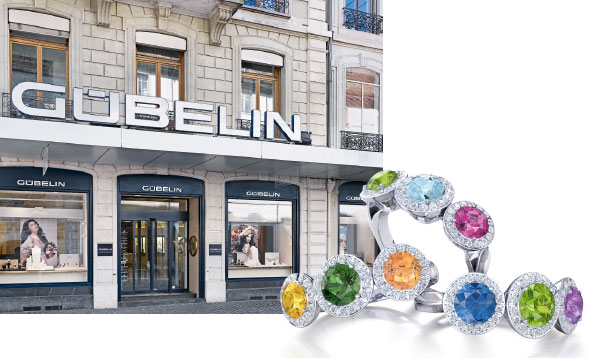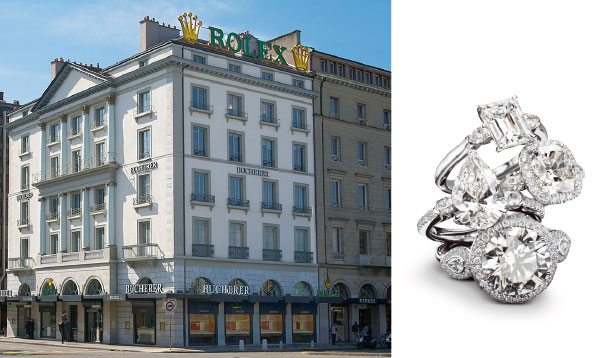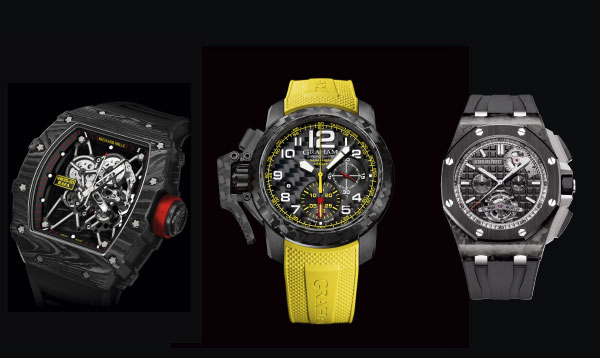
This year IWC has made a point of re-energising this collection which was unanimously well received by specialists. Let’s take an objective look for ourselves at the flagship of this fleet: the Portofino Hand-Wound Eight Days (ref. 5101).
The exterior :
Since its launch in 1984, the collection has undergone only slight cosmetic changes and remains an ultra-classical looking timepiece. This new model measures 45 mm in diameter and 12 mm thick – a ration representing virtually perfect proportions. The model entrusted to us by IWC was in red gold. This metal has been harmoniously associated with the anthracite colour of the dial revealing absolute aesthetic beauty. Ten bevelled and mirror-polished baton-type appliques surround a Roman 12 o’clock numeral, while the date appears in its traditional place at 3 o’clock and the generous seconds subdial is offset at 6 o’clock. The masterfully understated dates appear in white numerals painted against the anthracite dial backdrop. Nor should one neglect a mention of the alligator leather strap crafted by the famous Italian shoe designer Santoni. Its characteristic patina and the quality of its workmanship was spontaneously saluted with each “wearing” test, and is admirably complemented by the disarmingly simple yet appealing design of the pin buckle, which certainly deserves a closer look. So too does the round sapphire crystal that might appear commonplace at first glance, but IWC makes round sapphire crystals that embody truly magnificent accomplishments in terms of their proportions, aesthetics and technology.
The movement :
Hand-wound Calibre 59210 is endowed with an eight-day power reserve. Although it is the size of a pocket-watch, this movement stems from a development process specifically designed for a wristwatch. It represents the beating heart of a horological wonderland, for its naturally impressive diameter is ably matched by the natural yet refined manner in which it occupies the available space. A huge mainplate and extremely large bridges share the broad surface with centrings and shapes that are both entirely worthy of textbook examples for a Watchmaking School and yet amazingly contemporary. The generous barrel occupies one-fifth of the mainplate. It supplies the going train right up to the seconds which has its own fixed bridge magnificently recessed into the gear-train bridge. The guided tour continues with an admiring glance at the escapement bridge, before contemplating the balance-cock and its illustrious associates, the balance-and-spring assembly – which seem astonishingly small and will be dealt with under the “Tests” heading of this article. One also soon notices the plate of the balance-spring stud-holder, and thus that the stud itself is mobile, and also index-free. The balance-spring actually ends with a “classic” Breguet overcoil or terminal curve ensuring acknowledged advantages in terms of isochronism. The balance beats at a frequency of 28,800 vibrations, which is impressive considering that the eight days of energy are supplied by a single barrel. And speaking of the eight days, the figure implies eight days of guaranteed running and above all of correct rating. After eight days, the barrel would still have a considerable level of autonomy, but IWC’s well-known stopping device brings the movement to a halt. Its running is thus deliberately interrupted before the rating deteriorates while the final driving-force resources are nearing depletion. Classicism and efficiency are pervasive qualities throughout the watch, including in the decoration featuring linear Côtes de Genève (running from 12 to 6 o’clock), the bevelling on the bridges and the finishing of the steel parts and screws. While connoisseurs have come to expect excellence from IWC, it is delightful to nonetheless be surprised by such eloquent demonstrations of its art.
Tests :
Curious to see what the small balance held in store, we began the procedures by timing tests. Amplitudes and rates were measured in six positions at 0, 24 hours and on the last day of the power reserve, thus also providing an opportunity to check whether the stoppage after eight days is justified. Out of a concern for credibility, I must admit that the spring was perhaps slightly overwound when the measurements were taken at 0 hours. A mean amplitude of 287° with a 46° delta was nonetheless measure, along with a mean rate of 1.1 sec/day with a 4-second delta. After 24 hours, the mean amplitude was 299° with the same delta as at 0 hours, and the mean rate was 1.6/day with a delta down to 3.8 sec. On the last day, the mean amplitude was down 18° with a 52° delta but… the rate was 1.3 sec./day with a 3.9 sec. delta!
When actually worn on the wrist, this “5101” procedure even greater delight. This watch appears to be capable of constant role changes. In turn discreet, eye-catching, elegant and trendy, it could even be considered sporty if one were to adopt a British view of sport. The readability and functions are ideal for a timepiece in this category, and as for comfort, the wearer can easily end up forgetting all about this watch despite a distinct tendency to stare at it constantly !
By way of conclusion :
The enthusiasm sensed during the ten days shared with the Portofino Eight Days is on a par with the technical and aesthetic accomplishment represented by this splendid watch. Creating a successful design for a classic watch is doubtless one of the most difficult horological exercises. That of the 5101 guarantees that it will cross the decades while making light of passing fashions and relying firmly on what the author can only describe as the ultimate benchmark of reliability.






